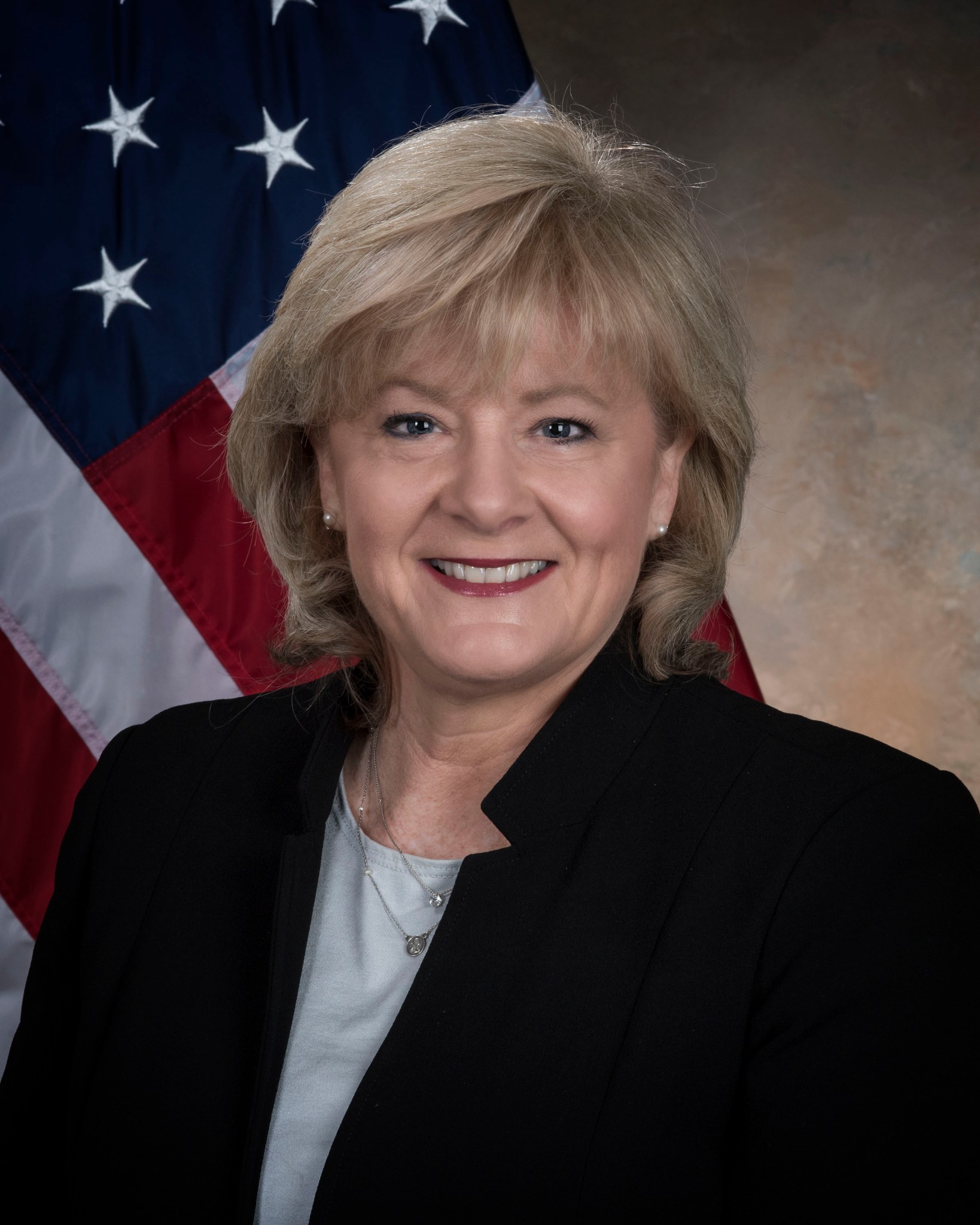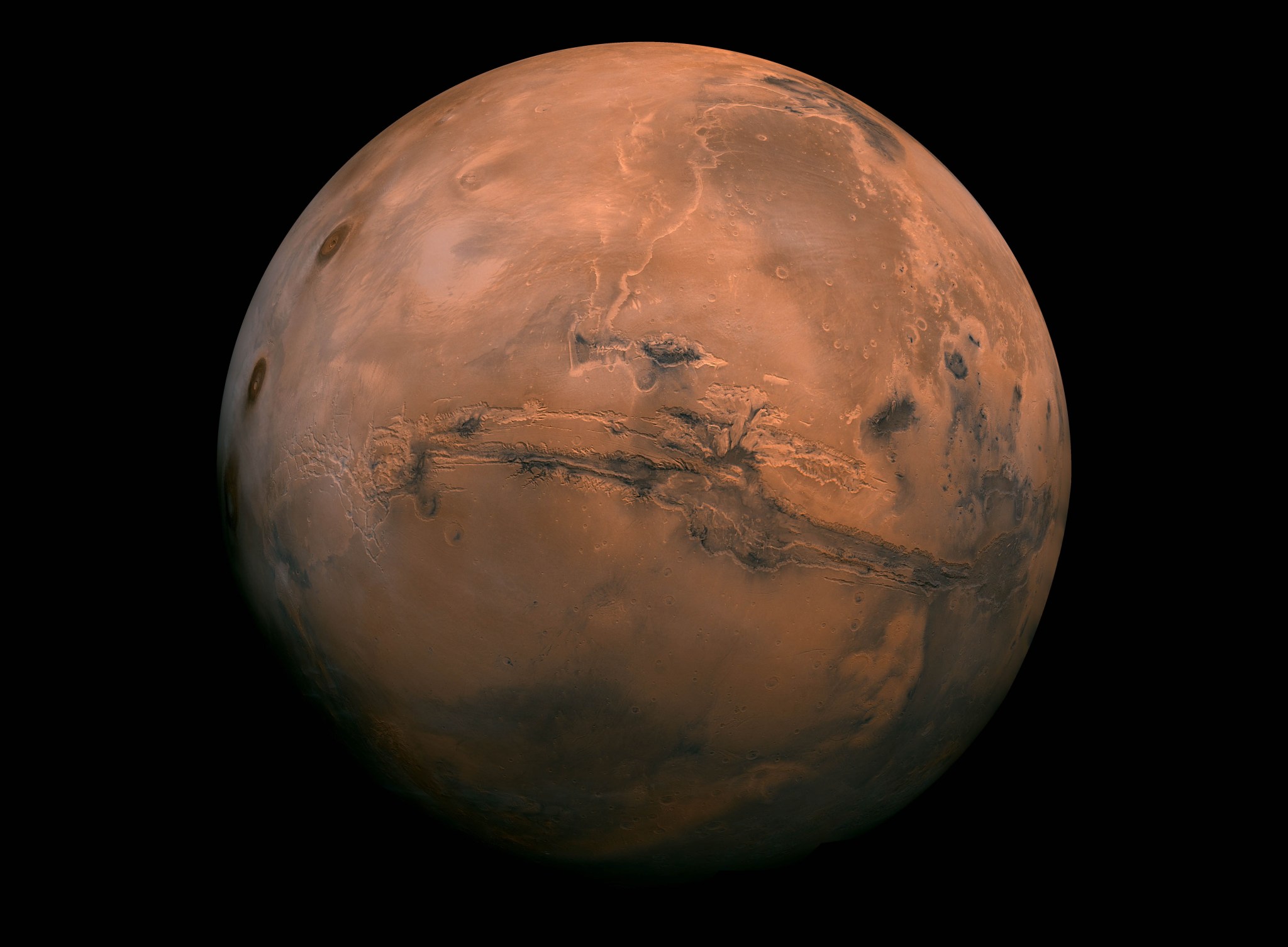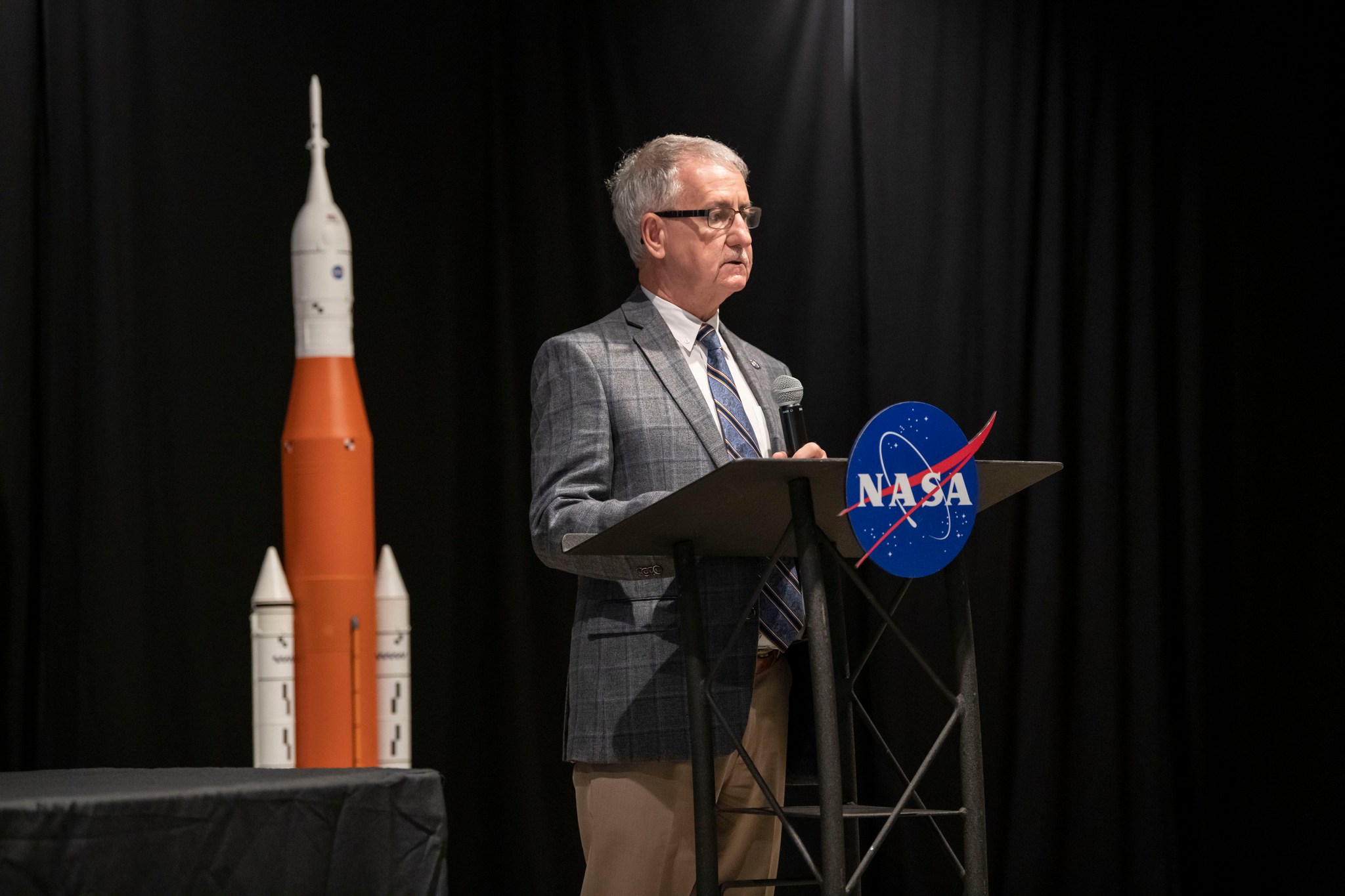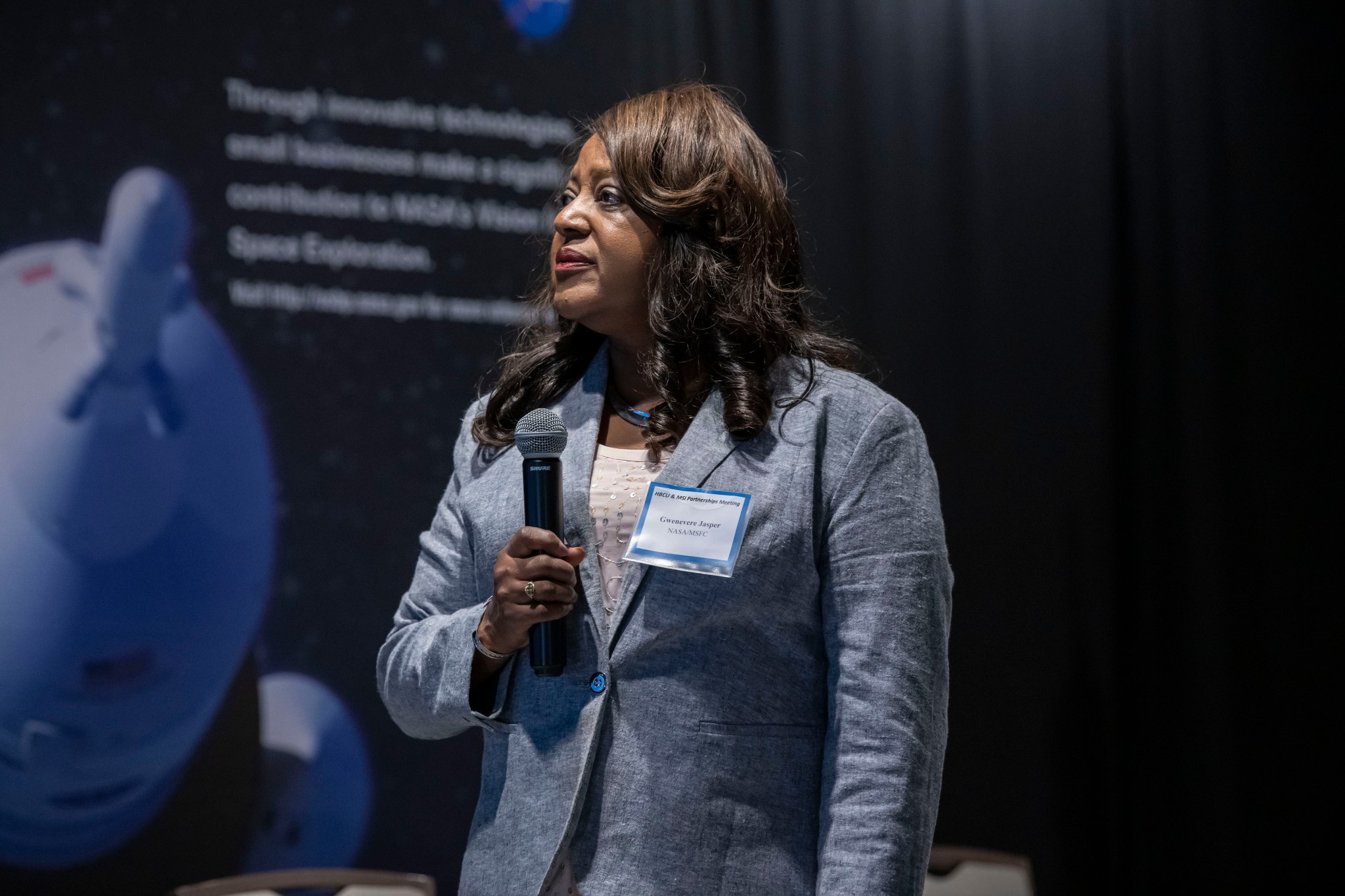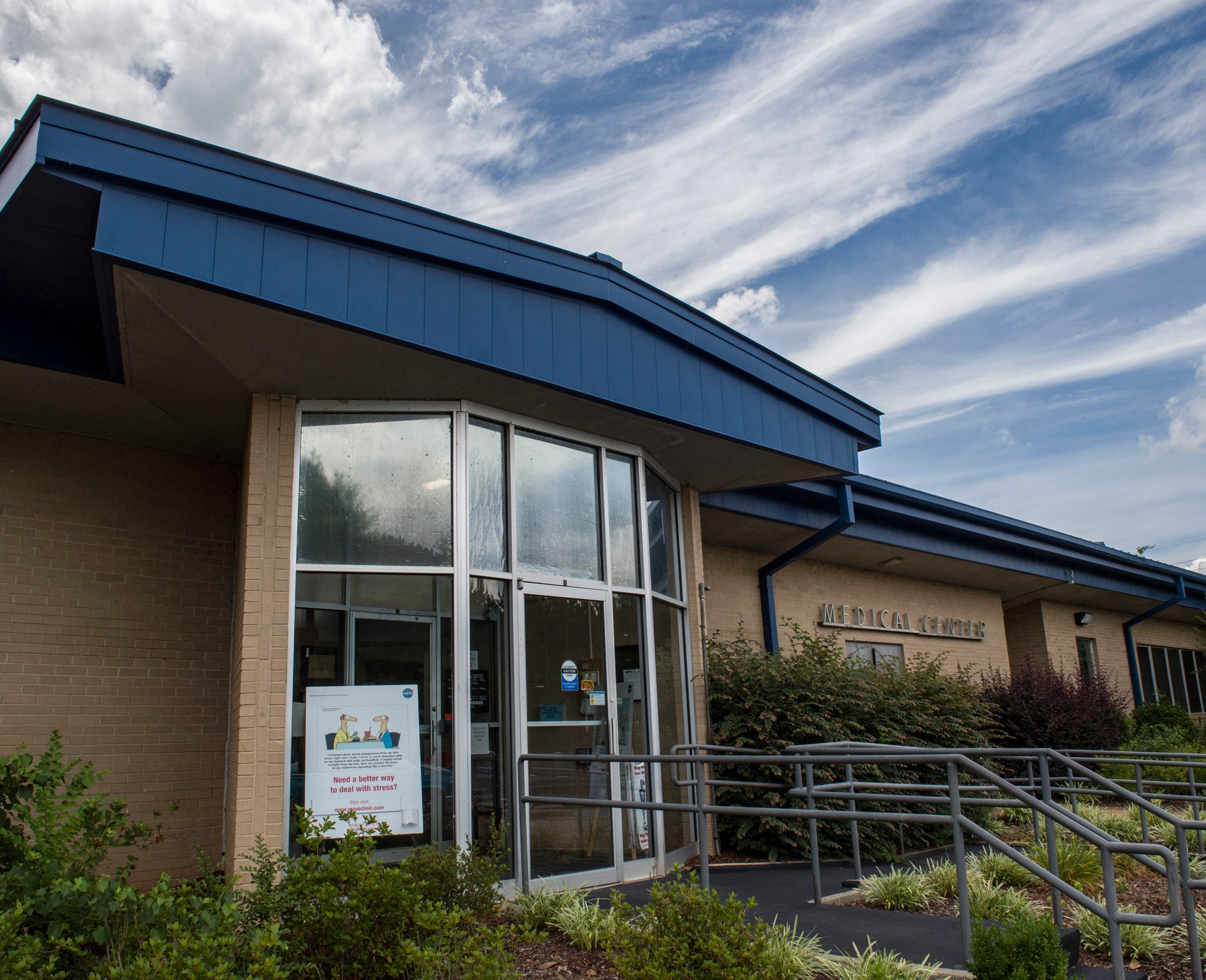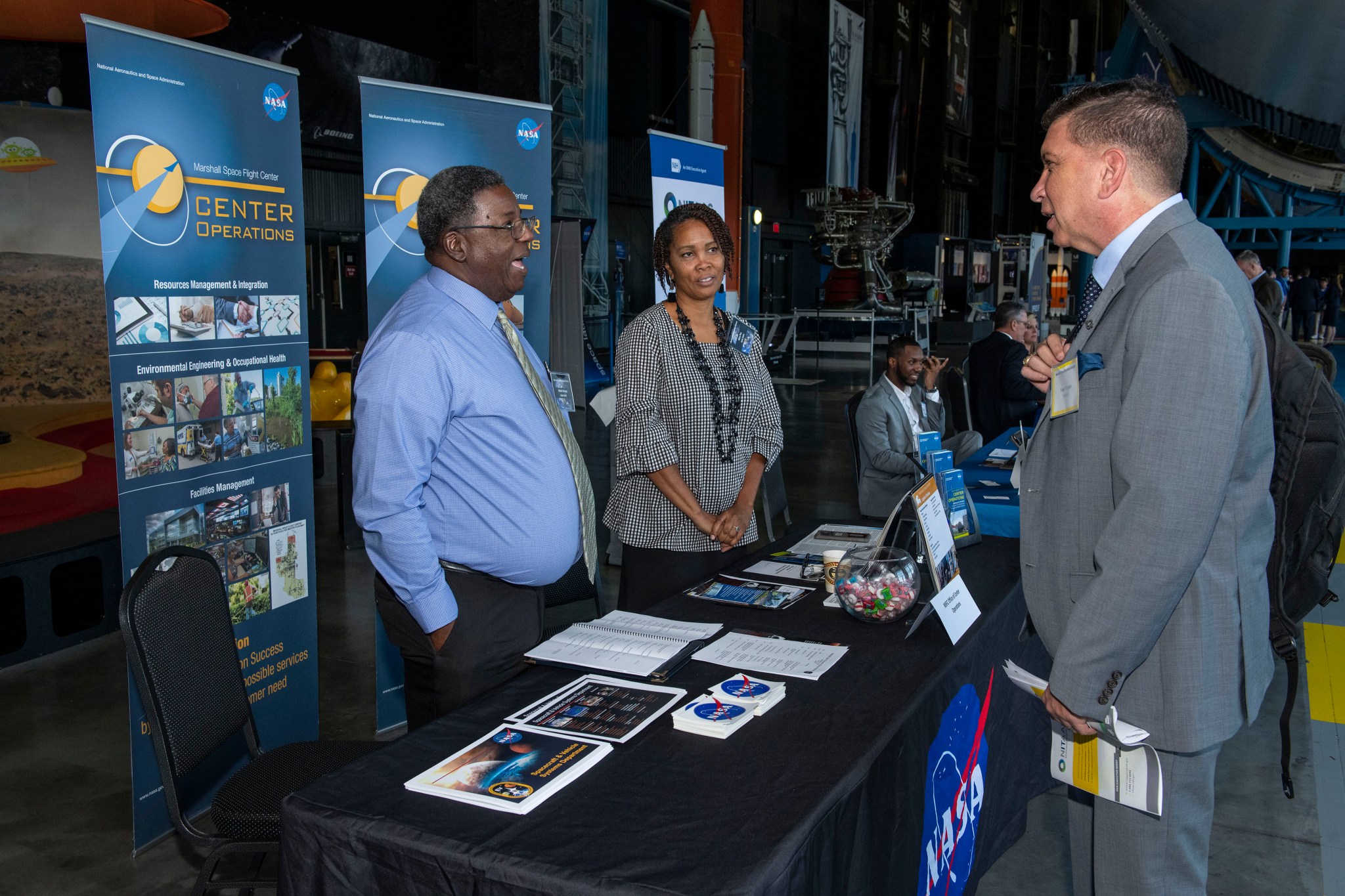In This Week’s Star
- Marshall Director Jody Singer to Host All-Hands Meeting Sept. 26
- NASA Joins Last of 5 Sections for Space Launch System Rocket Stage
- Carbon Dioxide Conversion Challenge Could Help Human Explorers Live on Mars
- Marshall Selected to Lead NASA’s Mentor-Protégé Program
- Marshall Medical Center’s New Options Begin Oct. 1
- Marshall Leaders Present Industry, Advocate Awards at Small Business Alliance Meeting
- 8th Annual Racin’ the Station Duathlon Set for Sept. 28
- This Week in NASA History: Hinode Launches – Sept. 23, 2006
Marshall Director Jody Singer to Host All-Hands Meeting Sept. 26
NASA’s Marshall Space Flight Center Director Jody Singer will host an all-hands meeting Sept. 26 at 1 p.m. in Building 4200’s Morris Auditorium.
Singer will discuss progress on the Space Launch System and Human Landing System programs that will launch and land the Artemis Moon missions. Singer will also provide a status of the continuation of funding ahead of next week’s new government fiscal year.
Marshall team members will have an opportunity to have questions answered by Singer following her speech. Submit a question by visiting www.nasa.gov/townhall. Click “MSFC All Hands,” then click “+ Ask” or, if your question is already on the list, vote it up the list by clicking the arrow on the left.
Team members can also view the live address on Marshall’s Desktop Television.
NASA Joins Last of 5 Sections for Space Launch System Rocket Stage
NASA finished assembling and joining the main structural components for the largest rocket stage the agency has built since the Saturn V that first sent Apollo astronauts to the Moon. Engineers at the agency’s Michoud Assembly Facility connected the last of the five sections of the Space Launch System rocket core stage Sept. 19. The stage will produce 2 million pounds of thrust to send Artemis I, the first flight of SLS and NASA’s Orion spacecraft to the Moon.
“NASA has achieved a historic first milestone by completing the final join of the core stage structure for SLS, the world’s most powerful rocket,” said Julie Bassler, SLS stages manager. “Now, to complete the stage, NASA will add the four RS-25 engines and complete the final integrated avionics and propulsion functional tests. This is an exciting time as we finish the first-time production of the complex core stage that will provide the power to send the Artemis I mission to the Moon.”
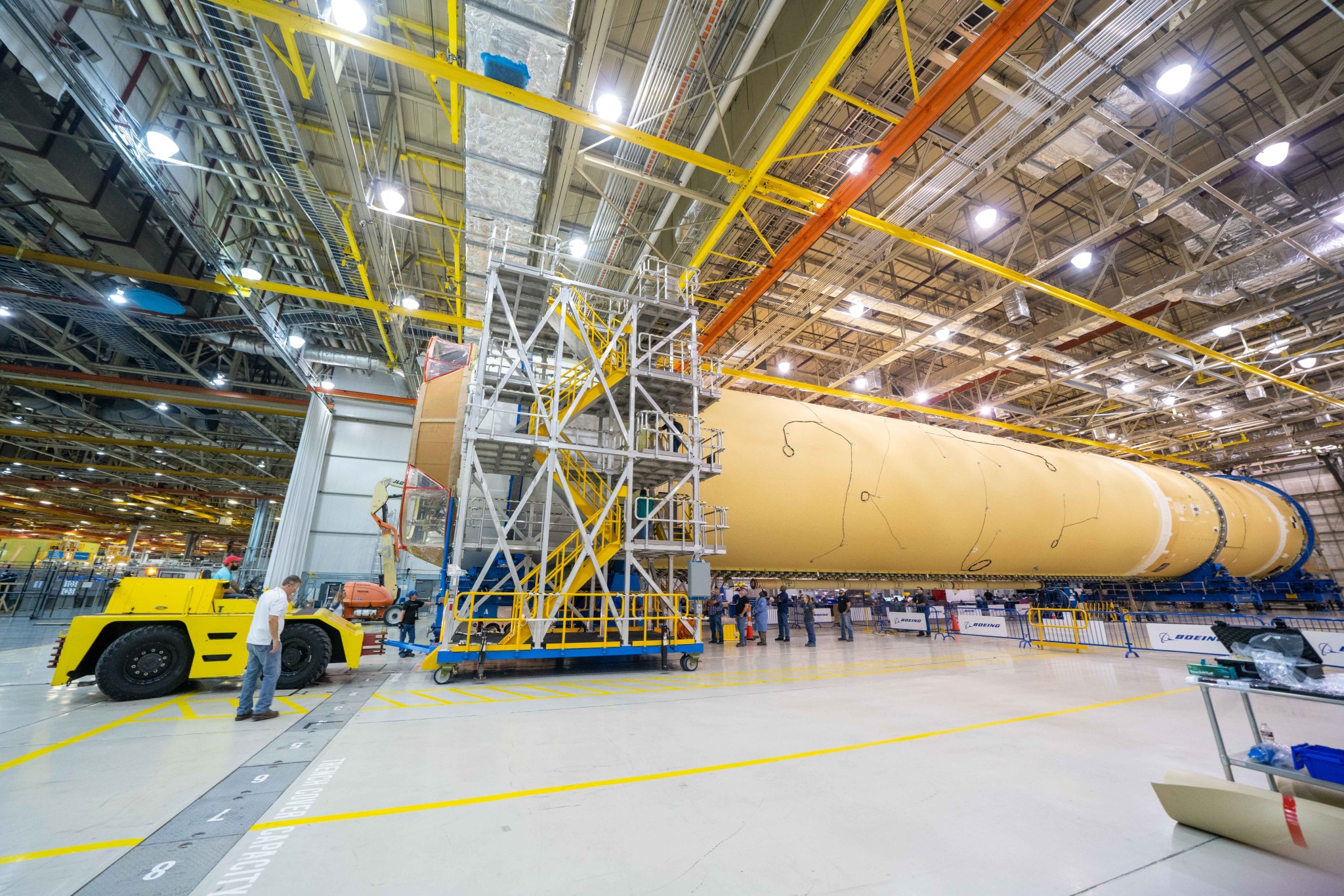
The last piece added to the stage was the engine section located at the bottom of the 212-foot-tall core stage. To complete the structure, technicians bolted the engine section to the stage’s liquid hydrogen propellant tank, which was recently attached to the other core stage structures. The engine section is one of the most complicated pieces of hardware for the SLS rocket and is the attachment point for the four RS-25 rockets and the two solid rocket boosters that produce a combined 8.8 million pounds of thrust. The engine section also includes vital systems for mounting, controlling and delivering fuel from the stage’s two liquid propellant tanks to the rocket’s engines. This fall, NASA will work with core stage lead contractor, Boeing, and the RS-25 engine lead contractor, Aerojet Rocketdyne, to attach the four RS-25 engines and connect them to the main propulsion systems inside the engine section.
“Boeing expects to complete final assembly of the Artemis I core stage in December,” said Jennifer Boland-Masterson, Boeing operations director at Michoud. “After we deliver the stage, NASA will transport it on the agency’s Pegasus barge from Michoud to NASA’s Stennis Space Center for Green Run testing. Our team here at Michoud will continue working with NASA to build, outfit and assemble the core stage for Artemis II, the first mission that will send astronauts to orbit the Moon. Lessons learned and innovations developed in building the first core stage are making the second one progress much faster.”
During Green Run testing, engineers will install the core stage into the B-2 Test Stand at Stennis for a series of tests that will build like a crescendo over several months. This will be the first fully fueled test of this brand-new rocket stage. Many aspects will be carried out for the first time, such as fueling and pressurizing the stage. The test series culminates with firing of all four engines to demonstrate that the engines, tanks, fuel lines, valves, pressurization system and software can all perform together as they will on launch day.
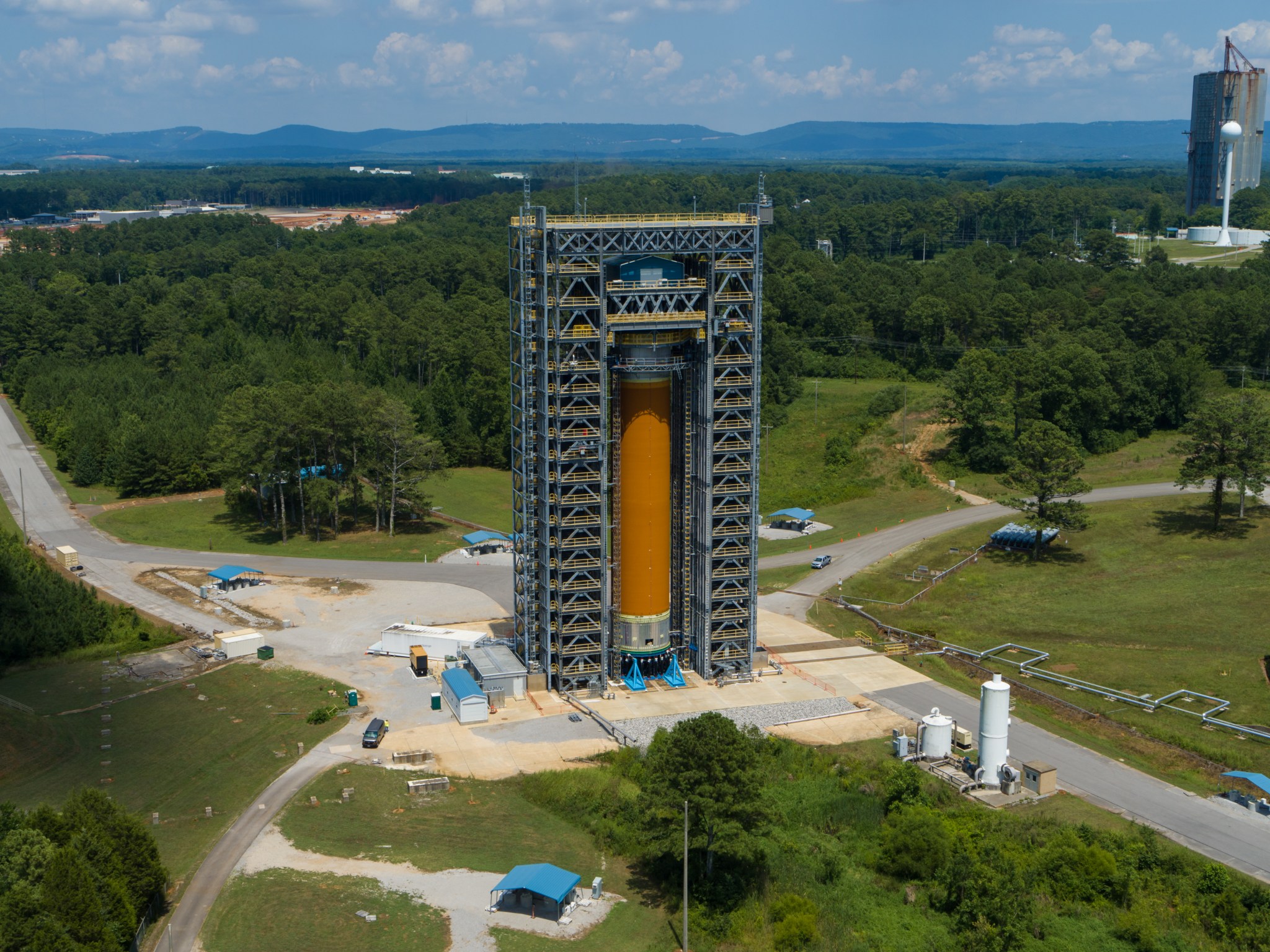
The SLS team also achieved another recent milestone by completing structural testing for the stage’s liquid hydrogen tank. The testing confirmed that the structural design for the tank on the rocket’s initial configuration, called Block 1, can withstand extreme conditions during launch and flight. Teams at NASA’s Marshall Space Flight Center put a test version of the tank through the paces during 37 separate test cases that exceed what engineers expect the SLS rocket to experience. The final test used 80,000 gallons of liquid nitrogen to simulate the cryogenic conditions, or extreme cold, that the liquid hydrogen tank will experience in flight. Testing will continue later this year to show the tank’s structural design is adequate for future designs of the vehicle as it evolves to a Block IB configuration and missions with even greater forces.
In addition to providing propellant and power to get the SLS rocket and Orion spacecraft to space, the core stage houses the flight computers and avionics components that control the first eight minutes of flight. The avionics system, including the flight computers, completed integrated system level qualification testing showing the components all work together to control the rocket in the Software Integration and Test Facility at Marshall. The next step is to test the flight software with all the ground system software, Orion and launch control in the Systems Integration Laboratory at Marshall.
Carbon Dioxide Conversion Challenge Could Help Human Explorers Live on Mars
By Amanda Adams
On Earth, plants convert carbon dioxide into carbohydrates and oxygen — food for them and oxygen for us to breathe. There aren’t plants on Mars, but there is a lot of CO2. Technology that takes abundant resources, like CO2 found on the Red Planet, and turns them into useful supplies for human explorers could be key to long-term missions on Mars.
To help achieve this, NASA’s Centennial Challenges program, managed at NASA’s Marshall Space Flight Center, has opened Phase 2 of the CO2 Conversion Challenge. The competition invites the public, academia and industry to build a system that demonstrates the conversion of CO2 in combination with hydrogen — without the use of plants — to produce simple sugar molecules known as D-sugars. A “sweet” and successful demonstration will earn up to three top teams a portion of $750,000.
The ability to make D-sugars such as glucose in space could fuel bioreactors filled with microorganisms. These systems could rapidly convert sugar into valuable mission products, including nutrients, fuel, adhesives and other materials.
During Phase 1 of the competition, teams from across the country submitted system designs, provided information on how the conversion would occur and explained how their system would work in space. Submissions also provided fabrication and testing plans. In May 2019, NASA awarded five teams a total of $250,000. Participation in Phase 1 is not required to participate in Phase 2.
“This unique competition calls on the public to help NASA solve a complex challenge and develop innovative systems,” said Jim Reuter, associate administrator of the agency’s Space Technology Mission Directorate. “We look forward to demonstrating oxygen production from the Martian atmosphere with an instrument onboard the Mars 2020 rover. However, the abundance of CO2 in Mars’ atmosphere can enable even more opportunities for in-situ manufacturing of products that will enable humans to live and thrive sustainably on the planet, and also be implemented on Earth by using both waste and atmosphere CO2 as a resource.”
While sugar-based biomaterials can be made on Earth, the current processes cannot be easily adapted for space missions because of limited resources, such as energy, water and crew time.
The Centennial Challenges program is an element of the Prizes and Challenges program within NASA’s Space Technology Mission Directorate that offers incentive prizes to generate revolutionary research and technology solutions to problems of interest to NASA and the nation.
Adams, an ASRC Federal/Analytical Services employee, supports Marshall’s Office of Strategic Analysis & Communications.
Marshall Selected to Lead NASA’s Mentor-Protégé Program
By Taylor Goodwin
The Office of Small Business Programs at NASA’s Marshall Space Flight Center, under the direction of David Brock, has been chosen to manage the agency’s Mentor-Protégé Program.
Marshall expects to officially take ownership of the program about April 2020, after a revamp of the program is complete. Marshall procurement analyst Esther Veras made the announcement during the Historically Black Colleges and Universities/Minority Serving Institutions Partnerships Meeting on Sept. 18 in Huntsville.
The Mentor-Protégé Program encourages NASA prime contractors to assist eligible protégés, thereby enhancing the protégés’ capabilities to perform on NASA contracts and subcontracts. Participation fosters the establishment of long-term business relationships between these entities and NASA prime contractors, and increases the overall number of these entities that receive NASA contract and subcontract awards.
The Mentor-Protégé Program has the ability to transform a small business or Minority Serving Institution, and enhance their capabilities to win contracts and subcontracts as a result of participation.
“We have been pace-setters here at Marshall,” said Brock, Marshall’s small business specialist. “We put the first six Mentor-Protégé Program agreements into motion and we want to see more opportunities for small businesses in the area. A few ways to focus on this will include maintaining active agreements, revamping the program and increasing activity through university involvement.”
Marshall welcomed representatives from 25 universities to the partnership meeting. Center officials gathered with representatives from the HBCUs, MSIs and some of agency’s own prime partners to provide the latest updates on immediate and future subcontracting opportunities.
Attendees viewed presentations from a variety of NASA, higher education and aerospace industry professionals. Each speaker offered an explanation of what their respective organization could bring to the table in order to help NASA reach its overall objective of advancing space exploration.
Rod Chappell, team lead of the Minority University Research Education Project Sustainability Initiative at NASA’s Langley Research Center, spoke on the importance of student mentoring. “We are here to create a successful workforce for the future, and the MSIs and HBCUs present are the key to that process,” he said.
Chappell placed particular importance on collaborating with educational institutions to give students a head start on finding their place in the aerospace field through direct industry influence, internships, fellowships, volunteer opportunities and additional methods of early involvement and exposure.
Chappell also led a Minority University Education Project workshop, which gave participants an inside look at what it takes to become a subcontractor at Marshall.
“We have had several small businesses, HBCUs and MSIs enter into professional relationships as a result of their attendance at this kind of event. We hope this year will offer the same opportunities,” Brock said.
To learn more about doing business with Marshall, visit: https://www.nasa.gov/centers/marshall/about/business.html
Goodwin, an ASRC Federal/Analytical Services employee, supports the Office of Strategic Analysis & Communications.
Marshall Medical Center’s New Options Begin Oct. 1
The Marshall Medical Center at NASA’s Marshall Space Flight Center will offer expanded services beginning Oct. 1.
Walk-in adult care services will be provided for civil servants and contractors. Both groups can use their health insurance (Blue Cross Blue Shield and Aetna are currently accepted), credit card or check. Co-payments will apply. Services will include acute illness, allergy injections, tuberculosis skin tests, immunizations and physical exams.
Beginning Oct. 1, the Marshall Medical Center will be open from 11:45 a.m. to 3:30 p.m. Monday through Thursday, and 11:45 a.m. to 2:30 p.m. on non-Flex Fridays. It will be closed on Flex Fridays. Urgent care will be available during clinic hours. The medical center is located at 4249 Morris Road.
Physical exams required by NASA or the Occupational Safety and Health Administration will continue for civil servants throughout the new medical services contract. Annual, voluntary health maintenance physicals will be billed to personal health care insurance. No additional out-of-pocket expenses are anticipated for employees who obtain their insurance-based annual physicals at the center. Appointments for physical exams must be made by calling 256-544-5731.
Government-provided NASA and OSHA certification physicals for contractors will be phased out over a four-year period beginning in fiscal year 2020. Companies will be able to partner with new medical services contractor, InoMedic Health Applications, however, to obtain certification physicals and drug screening tests for employees.
Marshall Leaders Present Industry, Advocate Awards at Small Business Alliance Meeting
By Taylor Goodwin
NASA’s Marshall Space Flight Center presented its Industry and Advocate Awards for fiscal year 2019 during the Marshall Small Business Alliance meeting Sept. 19 at the U.S. Space & Rocket Center.
The awards reflect leadership in the aerospace business community and sustained achievement. Established in 2007 and sponsored by Marshall’s Office of Procurement and Small Business Office, the Alliance helps small businesses pursue NASA procurement and subcontracting opportunities.
“This is about more than jobs and money,” said Steve Miley, Marshall associate director, in his welcoming address. “We are creating bridges between opportunities and potential for the workforce.”
Northrop Grumman Innovation Systems of Dulles, Virginia, was named Marshall’s Large Business Prime Contractor of the Year, while Teledyne Brown Engineering of Huntsville received the Large Business Prime Contractor Excellence Award.
Aerie Aerospace LLC of Huntsville was named the Small Business Prime Contractor of the Year. The Small Business Prime Contractor Excellence Awards were presented to Bastion Technologies Inc. of Houston; Cepeda Systems & Software Analysis Inc. of Huntsville; Manufacturing Technical Solutions Inc. of Huntsville; and Victory Solutions Inc. of Huntsville.
The Small Business Subcontractor of the Year was awarded to Tuskegee University of Tuskegee, Alabama. Recipients of the Small Business Subcontractor Excellence Award included AMRO Fabricating Corp. of Huntsville; Davis Strategic Innovations Inc. of Huntsville; Fort Walton Machining Inc. of Fort Walton Beach, Florida; Onyx Aerospace Inc. of Huntsville; QuantiTech Inc. of Huntsville; Rothe Enterprises of San Antonio; Seabrook Solutions LLC of Huntsville; Turbocam Inc. of Barrington, New Hampshire; and Wildwood Electronics Inc. of Madison, Alabama.
The Mentor-Protégé Agreement of the Year was presented to Jacobs of Dallas, and CRM Solutions Inc. of Huntsville.
Individual awards included Procurement Person of the Year, Anita J. Ayers; Program Person of the Year, Rajiv N. Doreswamey; Technical Person of the Year, Clyde S. Jones; and Small Business Technical Coordinator of the Year, Kimberly L. Keith.
NASA civil service employees nominate eligible individuals and organizations for awards. A panel of NASA business procurement officials evaluates each nominee’s business practices, innovative processes, adoption of new technologies and their overall contributions to NASA’s mission and the agency’s Small Business Program.
Award recipients in the categories of Large and Small Business Prime Contractors of the Year; Small Business Subcontractor of the Year; Procurement, Technical, Small Business Technical Coordinator; and Program Persons and Teams of the Year become candidates for agency-level Small Business Industry Awards.
“We are better as a diverse team with many representatives than we could ever be as one entity,” said Johnny Stephenson, director of the Office of Strategic Analysis & Communications. “There are many different ways to play. We’re here to help get you the contacts you need to get in the game.”
Goodwin, an ASRC Federal/Analytical Services employee, supports the Office of Strategic Analysis & Communications.
8th Annual Racin’ the Station Duathlon Set for Sept. 28
The International Space Station travels at approximately 17,000 mph. The Racin’ the Station duathlon at NASA’s Marshall Space Flight Center challenges participants to “beat” the space station by finishing a race course in less than 91 minutes and 12 seconds – the time it takes the station to orbit Earth.
The eighth edition of the race is set for 8:15 a.m. on Sept. 28. Athletes run 3.14 kilometers, bike 23 kilometers and finish with another 3.14-kilometer run. Participants can form two-person relay teams, in which one does the running portions and a partner handles the cycling. The start and finish line for both the race and each leg of competition is on Digney Road, in front of the Activities Building and the Wellness Center.
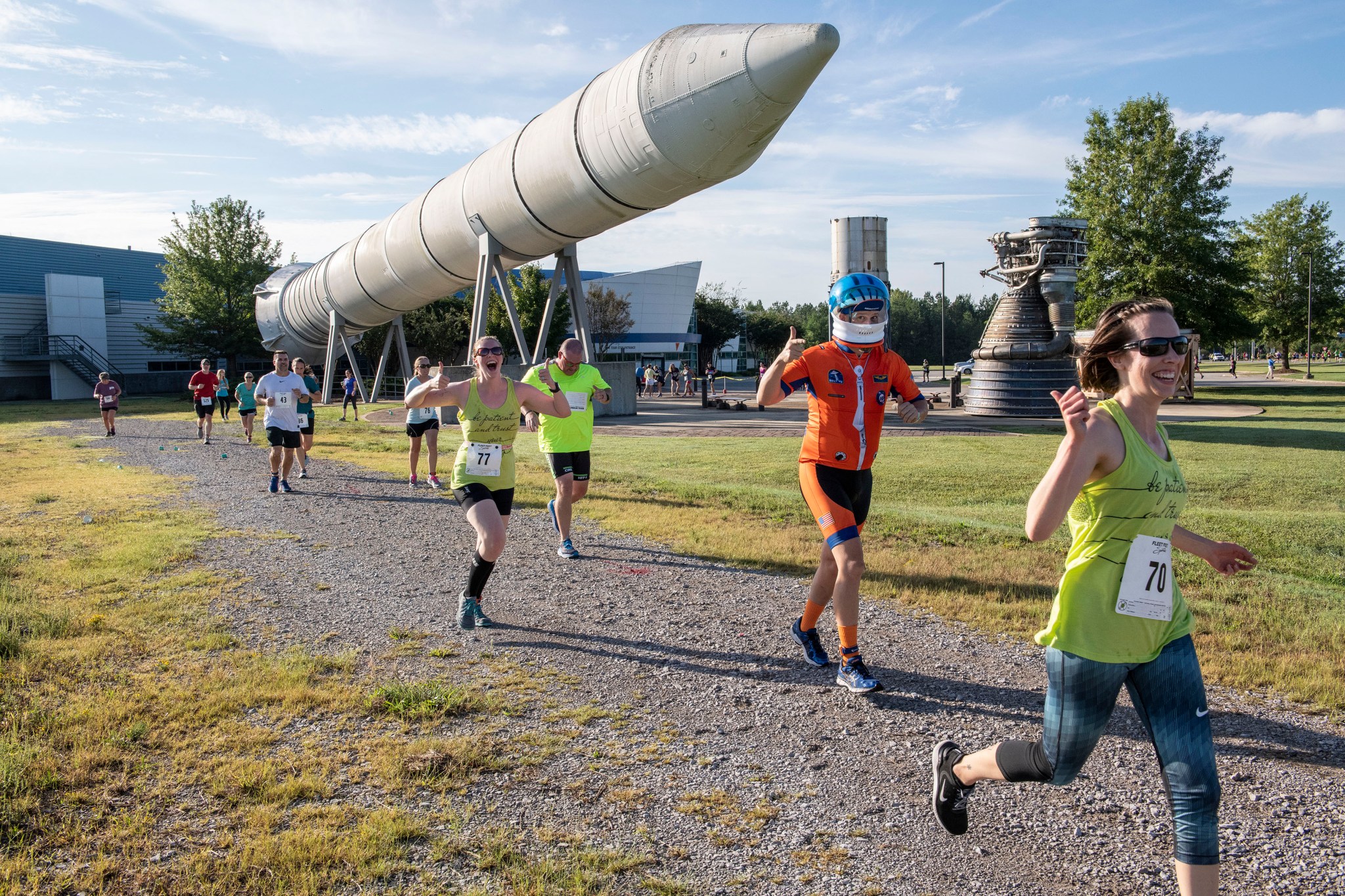
Online registration for those with Redstone Arsenal access is available until Sept. 26. The deadline for those without arsenal access has passed. Registration will not be available on race day. Packet pickup will be available from 11:30 a.m. to 6 p.m. on Sept. 27 at Fleet Feet Sports in Huntsville, and from 6:45 to 7:30 a.m. race day at the Activities Building. For more information, visit https://www.imathlete.com/#/legacy?url=%2Fevents%2FEventOverview.aspx%3FfEID%3D71953 or http://teamrockettri.org/racin-the-station-duathlon/.
Event proceeds benefit the Marshall Association Scholarship Fund. The Marshall Association awarded four university scholarships this year and Racin’ the Station is critical to raising funds to support next year’s scholarship competition.
Prizes will be awarded in multiple categories.
This Week in NASA History: Hinode Launches – Sept. 23, 2006
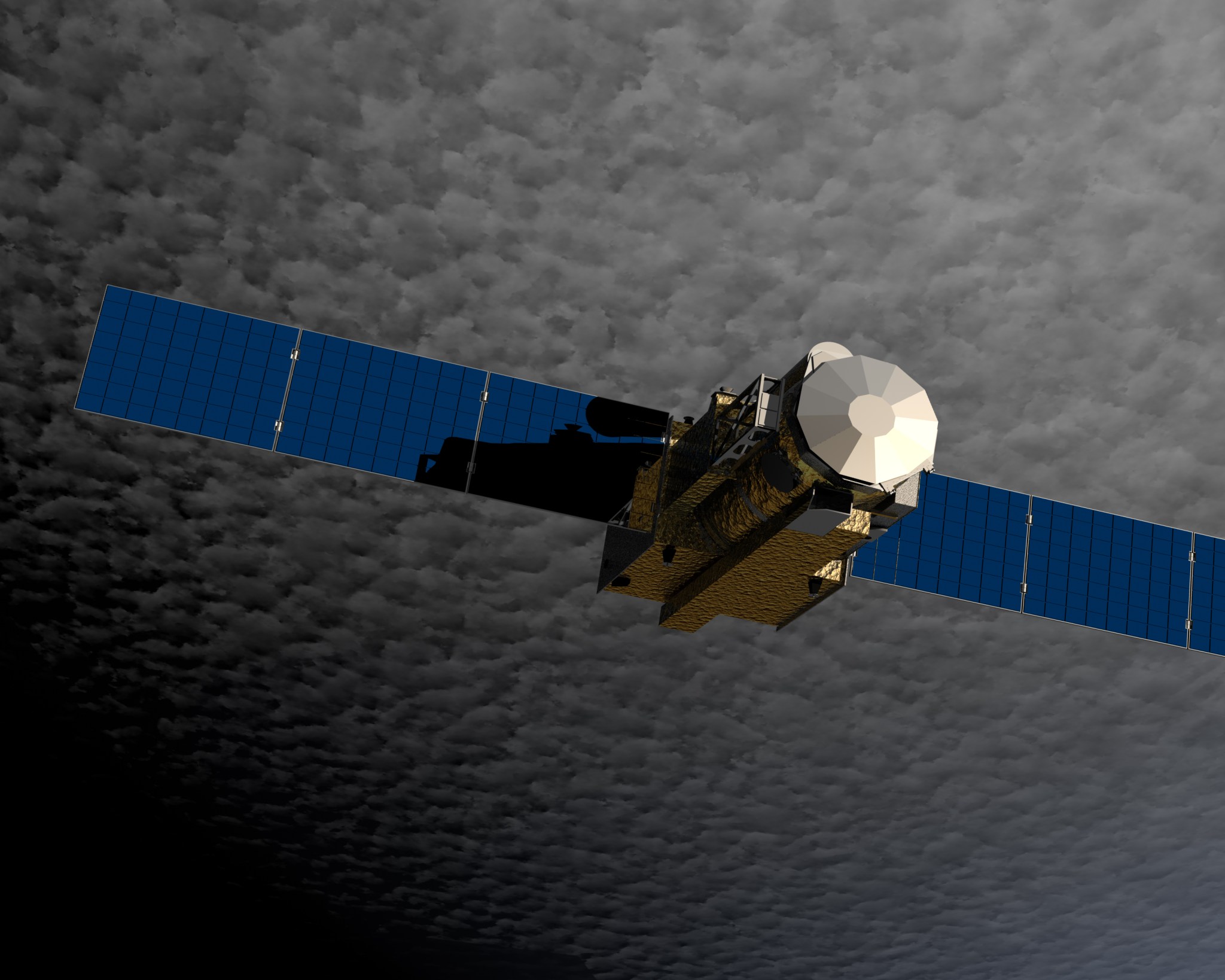
This week in 2006, the Hinode spacecraft, known as Solar-B before attaining orbit, was launched from Uchinoura Space Center in Japan. Here, an illustration shows the spacecraft in Earth orbit with its solar panels completely extended. Hinode was designed to probe into the Sun’s magnetic field to better understand the origin of solar disturbances that interfere with satellite communications, electrical power transmission grids and the safety of astronauts traveling beyond Earth’s magnetic field. Led by the Japan Aerospace Exploration Agency, the Hinode mission is a collaboration between the space agencies of Japan, the United States, the United Kingdom and Europe. NASA’s Marshall Space Flight Center managed the development of the spacecraft’s three science instruments: the Solar Optical Telescope, the X-ray Telescope and the Extreme Ultraviolet Imaging Spectrometer. The NASA History Program is responsible for generating, disseminating and preserving NASA’s remarkable history and providing a comprehensive understanding of the institutional, cultural, social, political, economic, technological and scientific aspects of NASA’s activities in aeronautics and space. For more pictures like this one and to connect to NASA’s history, visit the Marshall History Program’s webpage. (NASA)

























